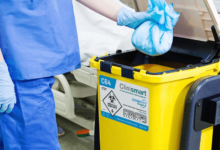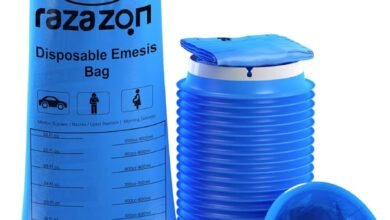Take Control of Exposure: How to Screen for Microplastics and How to Test for Microplastics with a Microplastics Test Kit

Introduction
Growing concern about invisible contaminants has led many to wonder “how to screen for microplastics?” and “how to test for microplastics?” As research uncovers potential health implications of microplastic accumulation, accessible solutions have emerged. An at-home microplastics test kit or microplastics testing kit can empower individuals to measure personal exposure and take informed action. This article explains core concepts behind screening and testing, guides readers in choosing a reliable kit, outlines what to expect from results, and suggests strategies for long-term exposure reduction—all without including any hyperlinks in the text.
Understanding Microplastics and Health Implications
Microplastics are tiny plastic fragments, typically under five millimeters in size, originating from the breakdown of larger plastic items or intentionally manufactured at micro-scale. These particles permeate water, air, food, and consumer products, leading to human exposure through ingestion or inhalation. Emerging studies have detected microplastics in human blood and arterial plaque, linking their presence to increased cardiovascular events such as heart attack or stroke over follow-up periods compared to individuals without detectable particles . Other research indicates possible endocrine disruption, inflammatory responses, and metabolic effects associated with microplastic exposure . Such findings prompt individuals to seek answers to “how to screen for microplastics?” and “how to test for microplastics?” as part of a proactive health approach.
How to Screen for Microplastics?
Screening for microplastics refers to an initial assessment that determines whether microplastic particles are present in the body, establishing a baseline exposure level. Historically, detecting microplastics in humans required specialized laboratory infrastructure beyond most individuals’ reach. Advances in at-home sampling methods now allow broader access. To address “how to screen for microplastics?”, one obtains an at-home sampling kit designed to collect a small biological specimen—commonly a finger-prick blood sample—along with sterile collection materials and clear instructions. The specimen is sent to an accredited laboratory where peer-reviewed assays detect and quantify common polymer types and size distributions microplastx.com. The resulting data provides personalized particle counts and size profiles, enabling users to determine if levels warrant further detailed testing or lifestyle interventions.
See also: Revolutionising Pond Health with Evolution Aqua Filtration
How to Test for Microplastics?
Testing for microplastics goes beyond initial screening by offering detailed characterization of detected particles. When asking “how to test for microplastics?”, individuals follow a structured at-home workflow: order a comprehensive microplastics testing kit, collect the sample precisely per instructions to preserve integrity, and ship it securely to a laboratory with recognized certifications. The laboratory analyzes the sample using validated, peer-reviewed methodologies to identify polymer types—such as polyethylene, PVC, polystyrene—and quantifies concentration metrics and size distributions microplastx.com. Reports typically arrive within two to three weeks, delivering insights into microplastic counts, particle size ranges, and comparisons against reference benchmarks drawn from broader cohorts blog.optimalhealthsystems.com. This detailed testing approach transforms abstract concerns into concrete metrics, supporting informed discussions with healthcare professionals and guiding targeted exposure-reduction measures.
Choosing the Right Microplastics Test Kit
Selecting an appropriate microplastics test kit or microplastics testing kit is critical for obtaining reliable, actionable results. Key considerations include:
- Scientific Validation: Verify that the assay method has been peer-reviewed and validated in independent studies.
- Laboratory Accreditation: Ensure the processing lab holds certifications such as CLIA or equivalent, indicating adherence to rigorous quality standards.
- Kit Contents and Instructions: The kit should include sterile collection materials, a clear sampling protocol, and secure, prepaid packaging for shipment, minimizing sample degradation risks.
- Comprehensive Reporting: Reports must detail total particle counts, size distribution data, concentration metrics, and contextual benchmarks so individuals can gauge their exposure relative to reference populations.
- Turnaround Time and Convenience: Look for at-home processes yielding results within a few weeks; faster feedback supports timely decision-making.
- Educational Support: Access to expert commentary, explanatory materials, or community forums helps interpret findings and plan personalized reduction strategies microplastx.com.
By focusing on these factors, individuals can choose a microplastics testing kit that delivers accurate data and meaningful guidance.
Benefits of an At-Home Microplastics Test Kit
An at-home microplastics test kit offers multiple advantages:
- Accessibility and Comfort: Sample collection takes place in a familiar environment without clinic visits, reducing barriers to participation.
- Privacy: Handling the process at home preserves confidentiality and minimizes anxiety associated with medical procedures.
- Timely Insights: Typical turnaround of two to three weeks enables individuals to promptly review exposure levels and decide on next steps.
- Empowerment Through Data: Receiving quantitative results on microplastic concentration and particle characteristics empowers individuals to make informed lifestyle changes or seek professional advice.
- Ongoing Engagement: Many providers offer extended educational resources—such as webinars or community platforms—encouraging sustained commitment to exposure reduction.
- Integration into Preventive Health: Screening and testing for microplastics can complement routine health assessments, adding another dimension to preventive care microplastx.com.
Democratizing access to advanced assays, an at-home testing kit transforms microplastics measurement into a practical tool for personal health management.
Interpreting Results and Planning Next Steps
Once a detailed report is received from a microplastics test kit, interpreting results involves several steps:
- Review Detected Polymer Types and Concentrations: Examine which plastics were identified, total particle counts, and size distributions. Compare these values against reference benchmarks provided by the laboratory or aggregated cohort data to understand relative exposure.
- Understand the Health Context: Although research on direct causal links remains ongoing, associations between microplastics in arterial plaque and cardiovascular risk suggest that elevated levels may warrant professional consultation . Individuals with existing risk factors (e.g., cardiovascular, endocrine concerns) may integrate findings into broader health evaluations.
- Consult Healthcare Professionals: Share results with a qualified provider to discuss potential implications and consider further diagnostic tests or interventions if necessary.
- Implement Exposure-Reduction Strategies: Use insights to guide targeted lifestyle changes—such as avoiding plastic-packaged foods, switching to non-plastic drinkware, or filtering drinking water—and monitor their impact.
- Schedule Periodic Re-Testing: Plan follow-up testing every six to twelve months to track exposure trends and evaluate the effectiveness of implemented measures.
- Leverage Expert Resources: Engage with educational content or communities offered by kit providers or research organizations to refine tactics and stay informed about emerging findings.
Thoughtful interpretation transforms numeric data into a structured health plan, ensuring that testing serves as a springboard for actionable improvements.
Strategies to Reduce Microplastics Exposure
Reducing microplastic intake complements screening and testing efforts. Practical measures include:
- Dietary Choices: Favor whole, unprocessed foods with minimal plastic packaging. Avoid heating food in plastic containers. Use filtered water in non-plastic drinkware.
- Household Practices: Replace plastic kitchenware with glass or stainless steel. Employ laundry filters or microfiber-catching bags to capture synthetic fibers shed during washing. Improve indoor air quality via ventilation or HEPA filtration to limit inhalation of airborne microplastics.
- Personal Care Selections: Choose products free of plastic microbeads. Opt for solid-format items without plastic packaging (e.g., bar soaps).
- Textile Decisions: Prefer natural fibers such as cotton, wool, or linen over synthetic fabrics. Wash synthetic garments less frequently and use microfiber-capturing devices.
- Advocacy and Awareness: Support brands committed to reducing plastic usage and better waste management. Participate in community initiatives and share knowledge to amplify collective impact.
Integrating these tactics into daily routines can meaningfully lower ongoing microplastic exposure and reinforce the insights gained through testing .
Integrating Testing into a Holistic Wellness Plan
Screening and testing for microplastics should be components of a broader preventive health regimen. When combined with routine medical check-ups, standard blood panels, and lifestyle assessments, microplastics data contribute to a comprehensive picture of well-being. If elevated microplastic levels coincide with cardiovascular, hormonal, or metabolic concerns, test results can inform targeted clinical discussions. Healthcare professionals may recommend dietary adjustments, detoxification-supporting practices, or specialist referrals. Embedding microplastics testing within a holistic framework ensures results are interpreted in context, leveraging data-driven insights alongside established health practices to foster a robust long-term wellness strategy.
Common Questions About Microplastics Screening and Testing
Individuals often have similar concerns regarding accuracy, invasiveness, and value:
- Accuracy: High-quality microplastics test kits employ peer-reviewed assays processed in accredited laboratories, ensuring reliable detection and quantification.
- Invasiveness: Sample collection methods—such as a finger-prick blood draw—are minimally invasive and safe when instructions are followed precisely.
- Turnaround Time: Typical processing times range from two to three weeks after sample receipt, delivering timely feedback.
- Report Content: Reports should detail detected plastic types, particle counts, size distributions, and concentration metrics, contextualized with community benchmarks to aid interpretation.
- Health Implications: While definitive causal links require further study, knowing personal exposure levels empowers lifestyle adjustments and professional consultations.
- Value of Re-Testing: Regular follow-up testing helps track trends over time, reinforcing positive behavior changes and demonstrating the effectiveness of exposure-reduction measures.
Addressing these questions builds confidence in pursuing microplastics screening and testing as part of proactive health management.
Maintaining Ongoing Vigilance
As research on microplastics evolves rapidly, ongoing awareness is essential. Subscribing to updates from reputable environmental and health research organizations, participating in expert-led discussions, or joining communities focused on plastic-free living encourages continuous learning. Emerging methodologies may offer enhanced sensitivity or broader detection capacities. Regularly revisiting exposure-reduction tactics in light of new evidence ensures strategies remain effective. Sustained vigilance amplifies the value of initial screening and testing efforts, fostering a long-term commitment to minimizing microplastic burden over time .
Brand Mention and Promotion (Without Hyperlinks)
For individuals seeking a reliable at-home microplastics testing experience, consider providers that offer peer-reviewed protocols and accredited laboratory processing. A reputable microplastics test kit brand—referred to here by name only—can guide users through sample collection, analysis, and result interpretation. Such providers typically deliver detailed reports on particle types, counts, and concentrations, accompanied by educational support to help plan exposure-reduction strategies. By selecting a science-backed testing service with transparent methodology and user-centric processes, you can take proactive steps toward understanding and managing personal microplastic exposure without relying on direct links in content.
Conclusion
Answering “how to screen for microplastics?” and “how to test for microplastics?” empowers individuals to confront a hidden environmental health issue with measurable data. A well-designed microplastics testing kit enables accessible at-home sampling, rigorous lab analysis, and comprehensive reporting without including hyperlinks in the text. Interpreting findings alongside evolving scientific insights guides lifestyle modifications and healthcare discussions. Integrating testing within a holistic wellness plan and maintaining ongoing vigilance ensures actions adapt as research advances. By performing regular screening and testing, implementing targeted exposure-reduction strategies, and supporting broader plastic reduction efforts, individuals can minimize microplastic burden and promote long-term health and environmental stewardship. This comprehensive approach transforms data into meaningful action, providing clarity and control over invisible contaminants.





